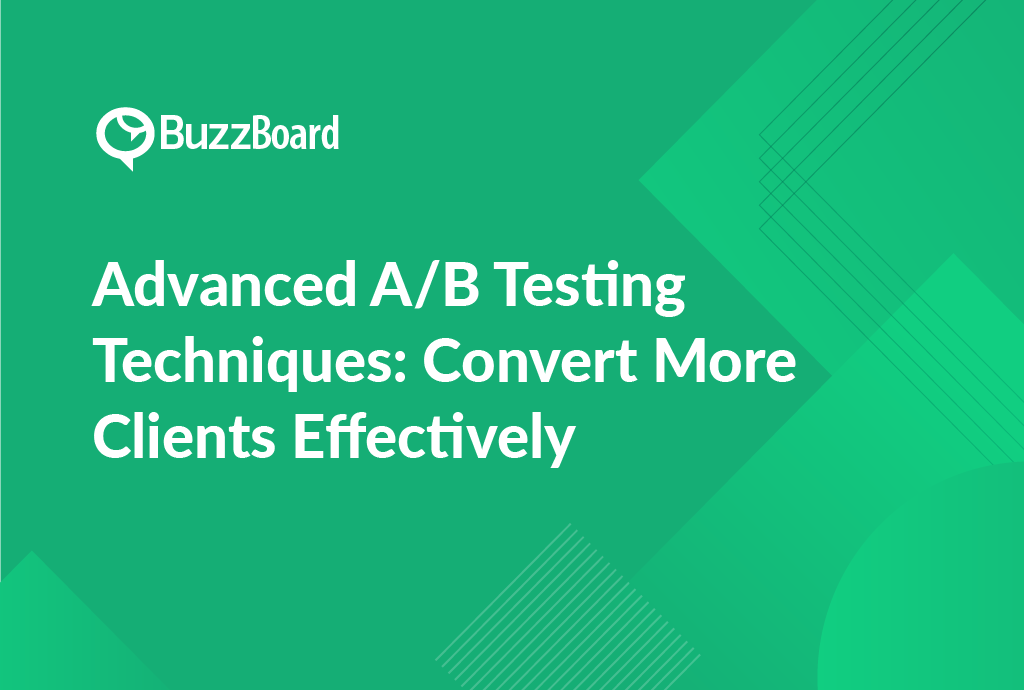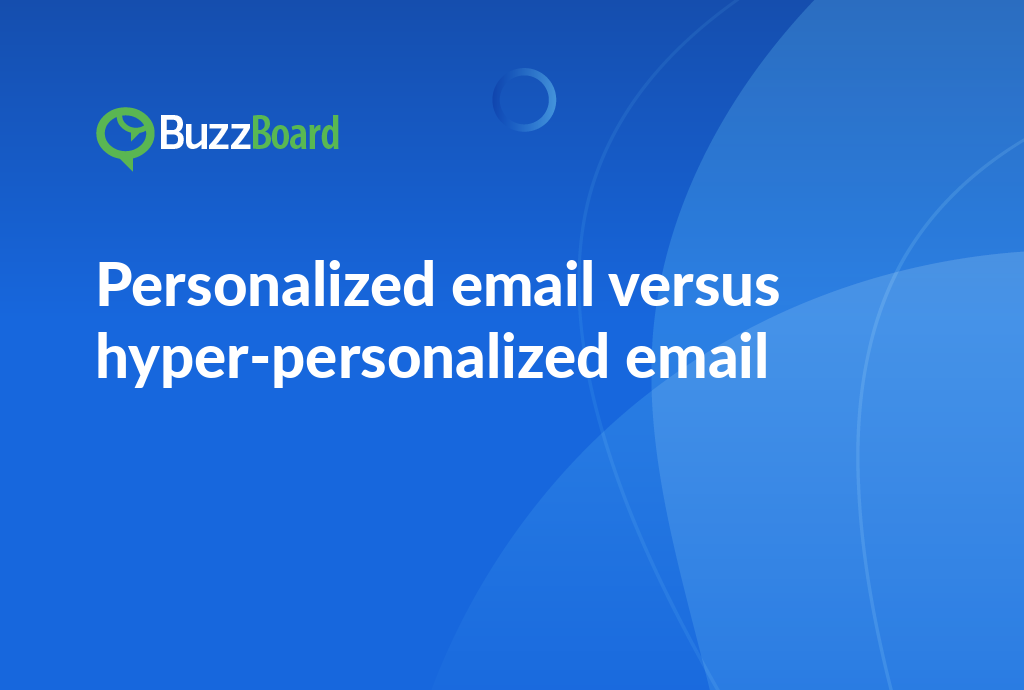Introduction to A/B Testing and Its Importance in Digital Marketing
In the dynamic world of digital marketing, A/B testing is a must-have tool. It’s more than just another industry buzzword. A/B testing is a proven strategy enabling digital marketing agencies to convert more clients by discerning marketing techniques that yield the best engagement.
So, what’s A/B testing? Simply put, it’s a methodology wherein two versions – A and B – of a webpage, email, or other digital marketing materials are compared to determine superior performance. Conducting these tests paves the way for data-driven insights into audience behavior, equipping your team to make data-informed decisions regarding content, design, and overall marketing strategy.
Regular A/B testing in your digital marketing efforts is pertinent for several reasons. Primarily, it takes the guesswork out of website optimization, facilitating data-backed decisions and transitioning business conversations from ‘we think’ to ‘we know’. By gauging the impact changes have on metrics, like sign-ups, downloads, or purchases, you can ensure every alteration yields positive results. Notably, statistical analysis removes gut feelings and intuition, making room for clear and informed changes.
A carefully conducted A/B test can drastically improve your client conversion rates. Every element—subject lines, webpage copy, images, call-to-actions, and more—can be A/B tested to verify if it resonates with your customers and prompts desired action.
To enhance your chances of digital marketing success, deepen your understanding of A/B testing and optimization. Let’s further examine this subject and understand its many benefits in detail.
By including A/B testing as an integral part of your digital marketing arsenal, you’re not just optimizing—you’re engaging, impressing, and most importantly, converting.
Explaining Advanced Techniques in A/B Testing
In the domain of digital marketing, sophisticated A/B testing methodologies are crucial for refining client conversion optimization. By discerning the approach that best serves your audience, you can customize your tactics to truly connect, thus opening avenues toward converting more clients.
A/B testing, a methodology frequently utilized by digital marketing agencies, aims to narrow down what captivates visitors on your website or digital platform. This method involves comparing two variants – A and B – that are identical barring a single variable that could influence user behavior.
For instance, you might experiment with two distinct email subject lines, webpage designs, or social media ads to identify which garners better engagement. This statistical examination enables sales professionals to figure out which version yields more leads or conversions, mitigating guesswork in digital marketing strategies.
A remarkable A/B testing method is multivariate testing; this technique simultaneously adjusts multiple variables to analyze how the combination impacts user behavior. This method enables marketers to understand the compounded effects of diverse variables. It proves particularly advantageous when optimizing areas likely to have high interaction effects, such as landing pages.
Contributing to the overarching ambition of digital marketing agencies, these advanced techniques empower sales professionals to better comprehend their target audience’s preferences. Therefore, they can align their marketing strategies accordingly to stimulate business growth.
Motivate your team to embrace advanced A/B testing in shaping their digital marketing strategies. Remember, conversion optimization isn’t a one-time task but a perpetual process of testing, understanding, and refining.
Want to delve deeper into advanced A/B testing techniques to enhance your digital marketing strategies?
The Role of A/B Testing in Effective Client Conversion
In the world of digital marketing, continuously developing strategies to convert clients and implement successful campaigns is essential. It’s not simply guesswork, but rather a science that includes skillful techniques and optimization methods. One prime example is A/B testing.
A/B testing is an indispensable tool in a digital marketing agency’s toolbox. It involves comparing two versions (A and B) to determine which performs better. This comparison could involve anything from website landing pages to email subject lines to call-to-action buttons. The version that triggers higher engagement—and thus, higher conversion rates—is declared the winner.
For salespeople seeking increased client conversion, A/B testing’s relevance cannot be overstated. It empowers you to understand your audience better by identifying what truly appeals to them. It’s not simply a one-time fix but rather should be an ongoing part of your optimization process, with constant tweaks and upgrades based on the data gathered.
For fruitful A/B testing, team it with strategies like user segmentation and personalization to garner more precise results. This approach aids in discerning customer behaviors and preferences and yields insights to more effectively cater to your clients.
With the calibration of your strategy using A/B testing, you’re not simply predicting what will appeal to your clients, but employing data-based findings to boost client conversion success.
You can access a comprehensive guide to A/B testing for client conversion. More resources about digital marketing techniques and optimization methods for enhanced client conversion are available. Stay competitive and utilize these optimization techniques to outshine your competitors.
Case Studies Showcasing How Optimization and Engagement Through A/B Testing Helped Convert More Clients
A/B testing is a robust strategy used by digital marketing agencies to increase client conversions. This technique enables sales teams to compare two versions of an ad, email, or webpage and determine which one garners better results. Optimizing via A/B testing can incite engagement, leading to heightened client conversion rates.
One particular case study by Adobe highlighted the substantial impact of A/B testing on digital marketing practices. After conducting a single A/B test, Adobe recorded a noticeable increase in conversions, resulting in a 13% surge in click-through rates. This case study solidifies the effectiveness of A/B testing and its critical role in client conversion for a digital marketing agency.
Another example showcasing the power of A/B testing in client conversion involves a digital marketing agency, EnviroMedia. Faced with the task of launching a social media campaign, they incorporated A/B testing to comprehend what content resonated more with their audience. Consequently, they experienced a 30% spike in client conversion.
A/B testing’s strength resides in its capacity to directly shape conversion by enabling teams to understand engagement factors. In the sphere of digital marketing, it’s essential to target the right audience with the right content, and that’s precisely what techniques like A/B testing empower you to do.
Stay ahead of the curve by testing, optimizing, and engaging to convert more clients. Moreover, A/B testing is a fundamental aspect of any marketing strategy. Keep learning and implementing for higher client conversion and stay updated with our regular posts.
Challenges in A/B Testing and How to Overcome Them
A/B testing is a vital element of digital marketing campaigns and is essential for enhancing engagement and driving client conversion. Nevertheless, this process comes with potential pitfalls that can ensnare the unwary. For salespeople within digital marketing agencies that cater to small and local businesses, heed this advice: successfully converting more clients requires careful steering through the challenges of A/B testing.
The first common obstacle is inadequate testing duration. A/B testing centers on achieving statistical significance. Therefore, obtaining a substantial sample size and allowing enough time to elapse is critical to derive valuable data and make robust conclusions. Cutting tests short can lead to flawed results, jeopardizing your client conversion plan.
Another hurdle is the selection of variables. It’s recommended to avoid altering too many elements simultaneously as it complicates the interpretation of the results. Was it the headline, call-to-action placement, or website color scheme that caused a boost in engagement? Identifying the exact cause can be baffling. Hence, it’s best to focus on testing one component at a time for an optimized and successful A/B testing routine.
These obstacles can be surmounted by systematically extending test periods and strategically selecting variables. The outcome will be precise and actionable results.
By thoughtfully planning and executing your A/B tests, you can fine-tune your digital marketing tactics, escalate engagement rates, and, ultimately, secure more clients for your business.









